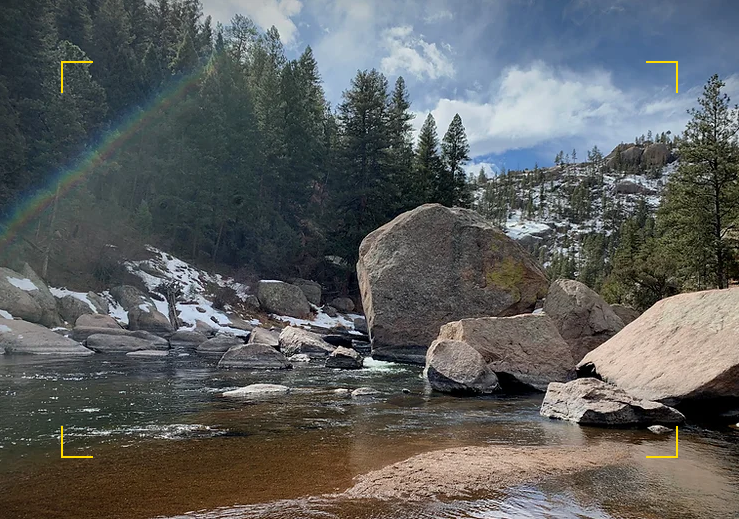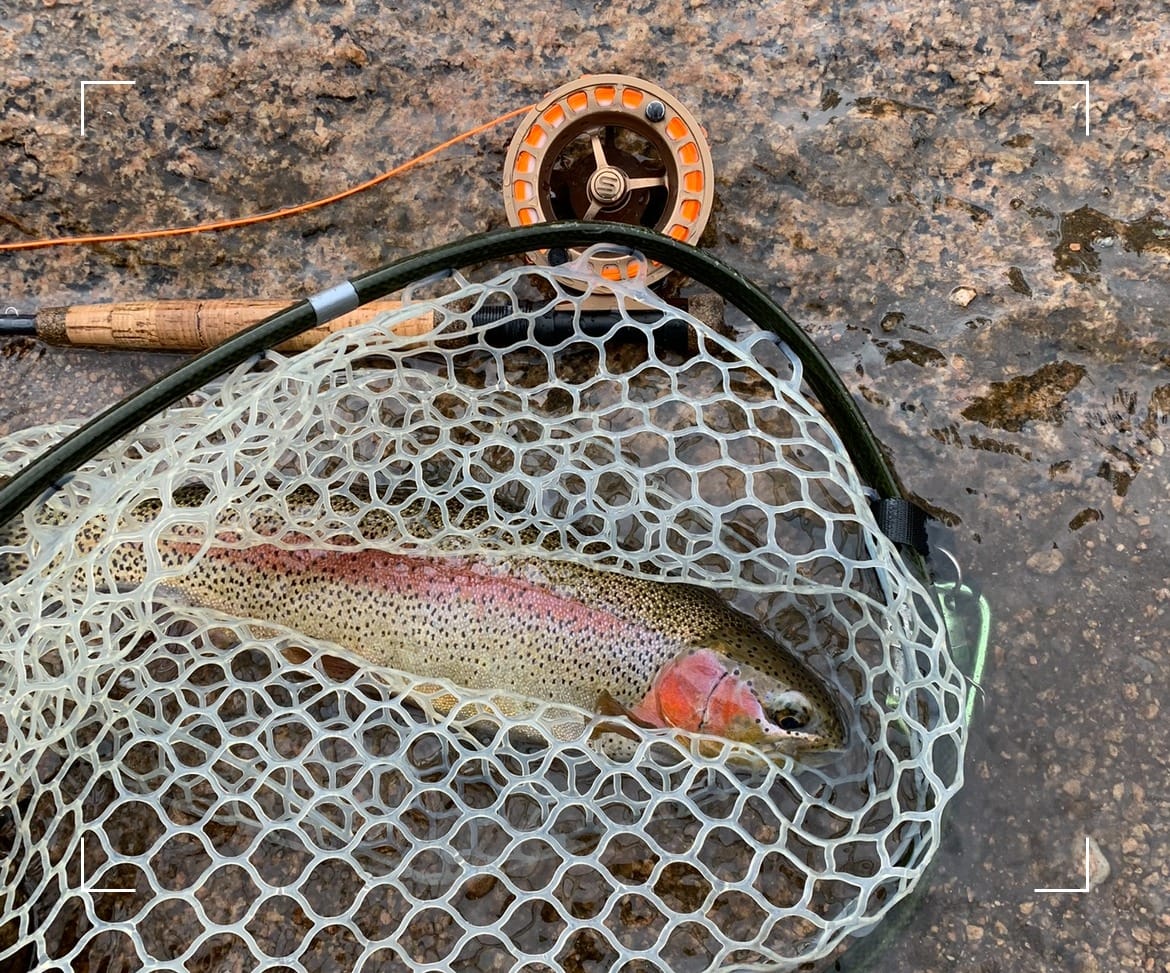Story From The Road: The Euro Litmus Test
Fly fishing: Euro nymphing vs. indicator nymphing go head to head

May 2022
It's easy for western flyfishers to bash the euro-nymphing trend. I mean, we're not the most welcoming crowd. A foreign method, touted as better than our homegrown strategies, has understandably ruffled a few feathers from the traditionalists. It's only for anglers who want to catch a bunch of 8" trout right?
I dedicated the last two seasons to trying out the euro-style methods and began practicing the style on every outing. Not only was I curious about how it worked, but I had a hunch that the techniques would help me become better at technical tailwater fishing. From my house, you could spin a compass in (almost) any direction and it would point you towards a tailwater that gets hit nearly daily with a ton of angling pressure. I suspected that most of the fishing done on these tailwaters with standard western nymphing rigs didn't effectively fish the water column like we assumed it does. Some days would yield phenomenal results, but on other days, you couldn't buy a bite. This always left me with some lingering doubt about our standard tactics. Meanwhile, the Europeans were making some bold promises, most of all touting better consistency with their seemingly odd methods. So I bit the bullet, bought a specialty rod, spent time at the vise, read some books, and fully committed. All the while, in the back of my mind I had an end goal: to compare the classic American and the novel (for me) European techniques under the same challenging conditions on a technical tailwater.
By the winter of 2021, I really felt comfortable with the new euro-inspired techniques. I had tested the methods on various rivers, and saw some promising results. I didn't really care about being strict with the rules; I'd gladly loop-on an indicator for certain spots, and I didn't discriminate jigged vs non-jigged flies, but I definitely ditched the "bobber-lobber" mentality. And throughout my experimentation, I can definitely assure the doubters that this isn't just a method for 8" trout. [If they don't want to hear it, I'm more than fine with letting the doubters win the shouting match.] Nonetheless, I had never put these techniques up against a real challenge, and I still held back on drawing conclusions. But as the winter progressed, I recognized that the conditions had become perfect for that real challenge. Basically, it boiled down to this: "Can it work in Cheesman Canyon in rough conditions?"
If you're unfamiliar, Cheesman Canyon of the South Platte is a highly regarded fishery in central Colorado. They say, if you can catch a fish in Cheesman Canyon, you can catch a fish anywhere. (To be fair, they say this about a lot of places....) It's not propped up by fish stocking, and the natural reproduction of the rainbows and browns in this stretch has bred some well-regarded trout. They are good at surviving and hard to fool. Add in the difficult elements of fishing in the winter, including lethargic fish, plus the requirements for ultra-stealthy tactics, and you have yourself a perfect technical testing ground. I had the added benefit of fishing alongside a friend that is incredibly skilled at indicator nymphing, and well versed in the language of fishing the South Platte. It was all coming together.

As we hiked into the canyon, we could see the storm brewing from the west. We expected cold and snow, but no amount of gear can insulate you for standing in the frigid river as the frosty wind starts picking up speed. We originally saw a few signs of life in the canyon. Unsurprisingly, a few other hardcore folks were also braving the elements, possibly hoping to capitalize on some morning midge activity. In an instant, most signs of life receded with the worsening weather, the midge activity dissipated, and things got really chilly. At this point in the day, we knew that very few anglers were still in the canyon.
So why did we stick it out? Well, the answer is two fold:
1. I was having consistent luck drifting #22 flies through all kinds of different water types. the front end of pools obviously, but as the fish hunkered down I switched to fishing slower runs. These slow, flat, runs would typically be difficult with indicator rigs, as these spooky fish DO notice and glide out of reach from your flies. Yet, with an uncomfortable amount of patience, I was able to get my flies drifting smoothly through these runs and it sure felt like the fish didn't notice my presence. No indicator, no problem.
2. Meanwhile, my friend's indicator rig was proving difficult. We discussed and observed fish moving out of reach from his casts. It's days like these where the legends of picky fish are forged.

Trying to balance the scales, we toughed it out. We didn't move often (it was warmer to stand in one spot). At one point, my feet felt like cinder blocks they were so numb. Then the storm settled in, and as a few snow flakes began their descent, the temperatures buffered just enough for a small reprieve. We decided to make one last push to new water, closer to the trail exit. It was late afternoon at this point, and we felt that our time was limited. I even felt like the fishing had wrapped up for the day, not expecting much more luck. However, we made our final stand, and it didn't take long to convert my earlier strategies into a few more fish. At this point, my fishing partner had seen enough, and he finally decided it was time for a dramatic tactic change since he hadn't had any luck yet. He took off his indicator and started making drifts across from where I was watching while warming my hands. It took one cast to get a bite, and a second one to land a fish. As if a switch was flipped, the results were night and day. We were both overjoyed to see that fish come into the net, and agreed it was high time to get out of the canyon and save our extremities. Sure enough, we were the only car in the lot when we made it back to the trailhead. But sometimes toughing things out can lead to the most interesting results.
As for my litmus test... maybe I just got lucky. But at the same time, there were plenty of opportunities to notice how fish negatively react to bobbers floating over their heads.


